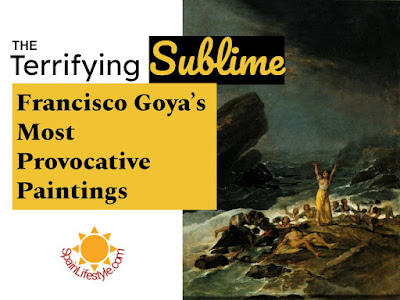GREETINGS ALL,
That's it for the autumn term of classes. I ended the season on a Neoclassical note.
Now it's time to get caught up with the people who want to join my Historical Walks around Javea. I started these walks many years ago as outdoor teaching experiences and I still have people coming to me who want to understand their village and learn about its history.FACT * It makes a big difference when you know what you are looking at. I live for teaching people and giving them historical and artistic knowledge. Smile.
From January 2023, I will be teaching again in my classroom the Romantic genre.
I think I will drop the Zoom classes because I only had one paying Zoom customer and with only that one, it's hard to pay for the Zoom platform. I am sorry, but what can I do? So I will just teach in my classroom.
Romanticism is a very big chapter in Spanish history. It has a lot to do with Spain coming of age as a constitutional government and the second woman monarch, albeit short-lived. It also has a lot to do with Spain finding its way back into the world of art after Paris had taken over and dominated the artistic world. Spain wanted to return to the map of art, so to speak, and did so through Romanticism.
I begin with the Northern Romanticism, which was accompanied by great academic works of art in Madrid and Barcelona.
I have written a book about the most famous of these academic romantic paintings and the historical stories that inspired them. It's called PRIDE & PASSION AT THE PRADO, and it's a guide to the seven most famous historical romantic stories in Spain and the artists who immortalised them.
Then I will look at the more personal, fun and friendly romantic easel paintings that were created in southern Spain. The largest collection is in Málaga at the Carmen Thyssen Museum, which only opened in 2011
So for those studying with me next season, it's going to be a wild ride through the era of Spanish Romanticism, capped off with a great field trip to Málaga, so we can see this collection of incredible paintings up close.
We will also spend a day at the Museum of Malaga, which is the fifth-largest museum in Spain. It is actually two museums in one. On the one hand, there is the Department of Archaeology on the second floor and the Department of Fine Arts on the first floor.
I will also tell you about the beginnings of Picasso's works so that we can also visit his museum in Málaga.
*End*
*******APPRECIATE ART & CULTURE * LOVE SPAIN
Resource Books written by
Karla Ingleton Darocas
and published by
SpainLifestyle.com
Resource Books written by
Karla Ingleton Darocas
and published by
SpainLifestyle.com
* CLICK HERE *












